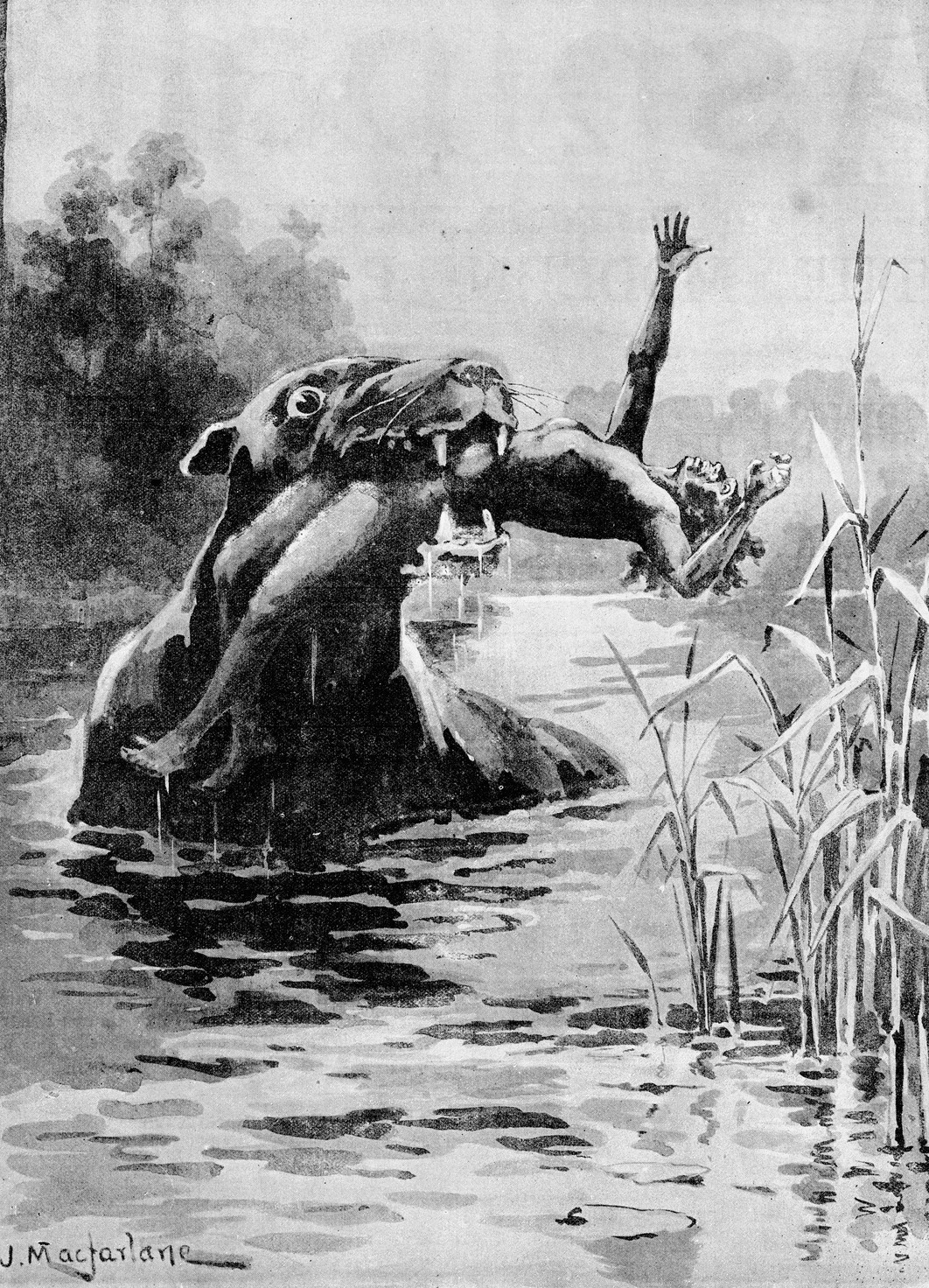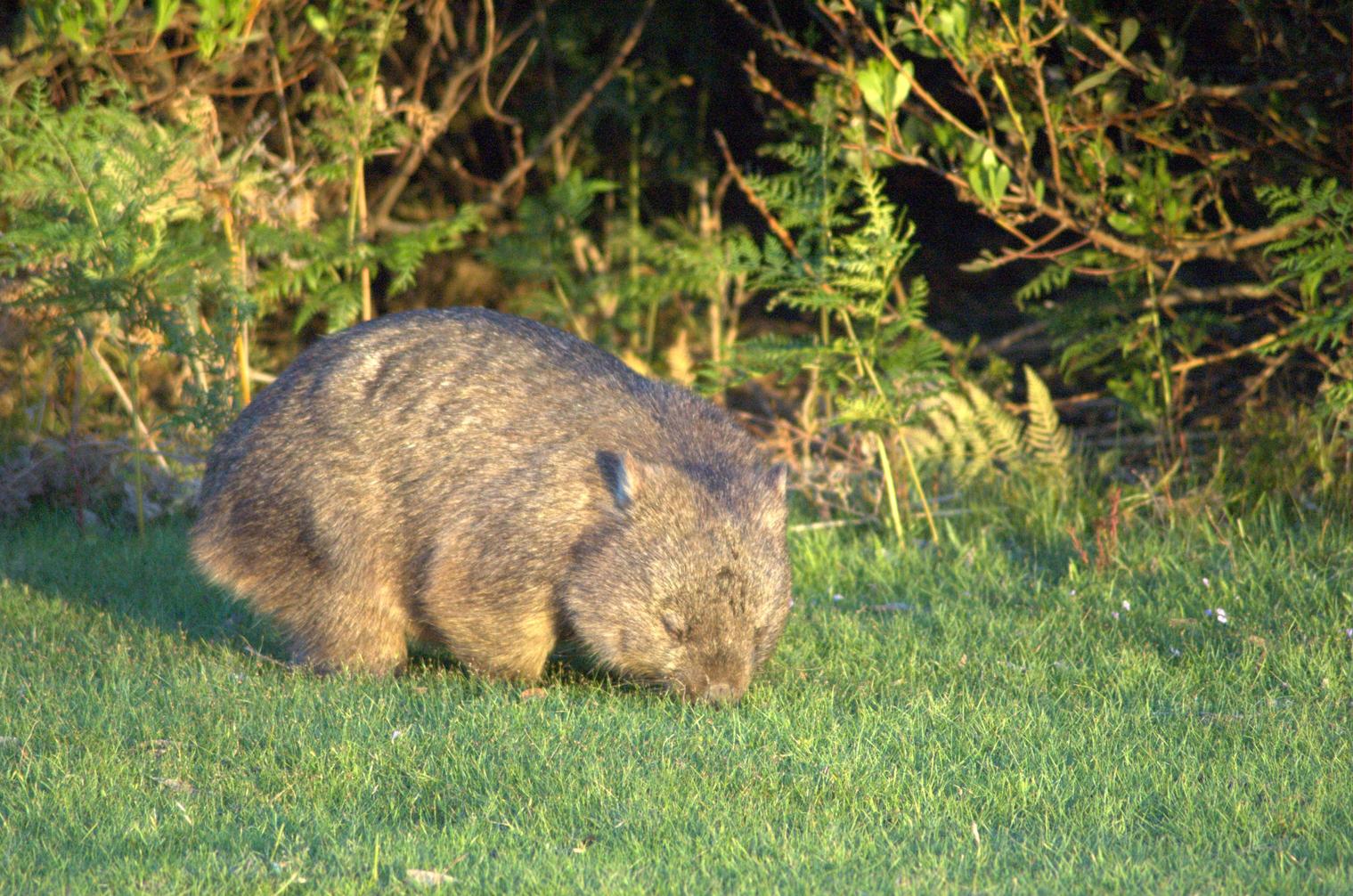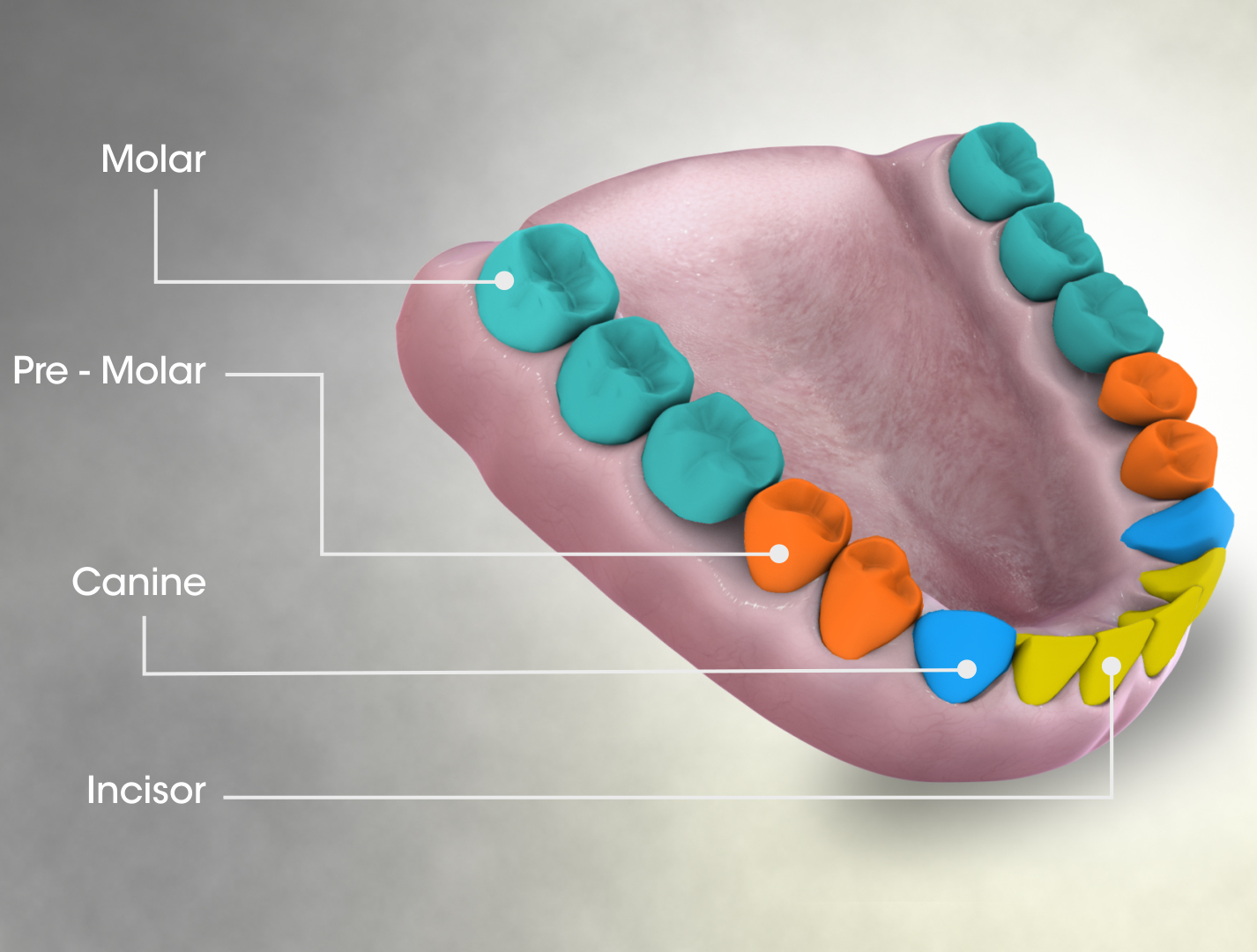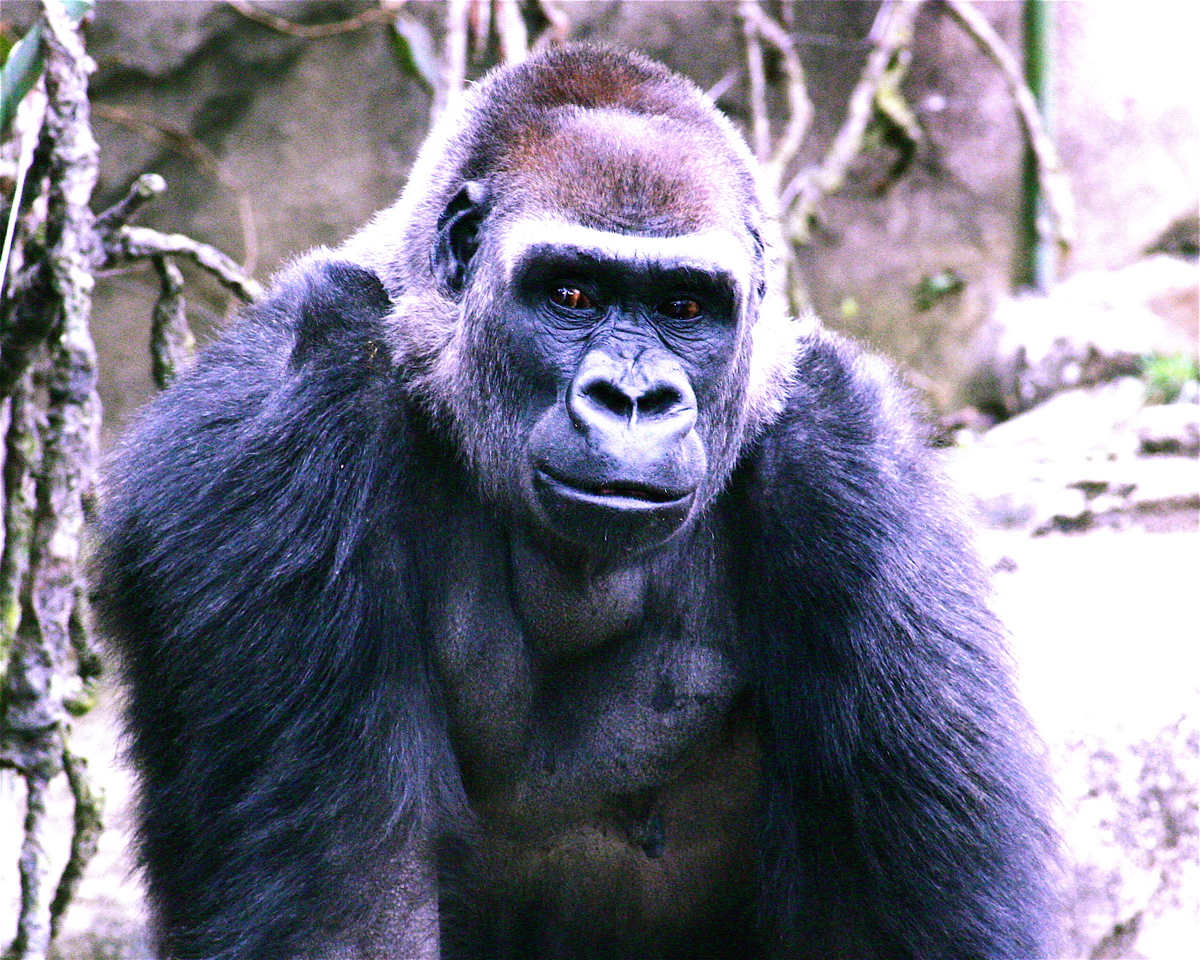|
Diprotodon
''Diprotodon'' (Ancient Greek: "two protruding front teeth") is an extinct genus of marsupial from the Pleistocene of Australia, containing one species, ''D. optatum''. The earliest finds date to 1.77 million to 780,000 years ago, but most specimens are dated to after 110,000 years ago. Its massive fossils were first unearthed in 1830 in Wellington Caves, New South Wales, before any serious scientists were active on the continent, and were variably guessed to belong to rhinos, elephants, hippos, or dugongs. ''Diprotodon'', formally described by Sir Richard Owen in 1838, was the first named Australian fossil creature, and set Owen on a path to becoming the foremost authority of his time on other marsupials and Australian megafauna so enigmatic to European science. ''Diprotodon'' is the largest known marsupial to have ever lived, far dwarfing its closest living relatives, wombats and koalas. It grew as large as at the shoulders, over from head to tail, and possibly almost in w ... [...More Info...] [...Related Items...] OR: [Wikipedia] [Google] [Baidu] |
Australian Megafauna
The term Australian megafauna refers to the megafauna in Australia during the Pleistocene Epoch. Most of these species became extinct during the latter half of the Pleistocene, and the roles of human and climatic factors in their extinction are contested. There are similarities between the prehistoric Australian megafauna and some mythical creatures from the Aboriginal Dreamtime. Causes of extinction Many modern researchers, including Tim Flannery, think that with the arrival of early Aboriginal Australians (around 70,000~65,000 years ago), hunting and the use of fire to manage their environment may have contributed to the extinction of the megafauna. Increased aridity during peak glaciation (about 18,000 years ago) may have also contributed, but most of the megafauna were already extinct by this time. Others, including Steve Wroe, note that records in the Australian Pleistocene are rare, and there is not enough data to definitively determine the time of extinction of m ... [...More Info...] [...Related Items...] OR: [Wikipedia] [Google] [Baidu] |
Thylacoleo
''Thylacoleo'' ("pouch lion") is an extinct genus of carnivorous marsupials that lived in Australia from the late Pliocene to the late Pleistocene (2 million to 46 thousand years ago). Some of these marsupial lions were the largest mammalian predators in Australia of their time, with '' Thylacoleo carnifex'' approaching the weight of a lioness. The estimated average weight for the species ranges from . Taxonomy The genus was first published in 1859, erected to describe the type species ''Thylacoleo carnifex''. The new taxon was established in examination of fossil specimens provided to Richard Owen. The familial alliance takes its name from this description, the so-called marsupial lions of Thylacoleonidae. The colloquial name "marsupial lion" alludes to the superficial resemblance to the placental lion and its ecological niche as a large predator. ''Thylacoleo'' is not closely related to the modern lion ('' Panthera leo''). Genus: ''Thylacoleo'' (''Thylacopardus'') – Aust ... [...More Info...] [...Related Items...] OR: [Wikipedia] [Google] [Baidu] |
Bunyip
The bunyip is a creature from the aboriginal mythology of southeastern Australia, said to lurk in swamps, billabongs, creeks, riverbeds, and waterholes. Name The origin of the word ''bunyip'' has been traced to the Wemba-Wemba or Wergaia language of the Aboriginal people of Victoria, in South-Eastern Australia. The word ''bunyip'' is usually translated by Aboriginal Australians today as "devil" or "evil spirit". This contemporary translation may not accurately represent the role of the bunyip in pre-contact Aboriginal mythology or its possible origins before written accounts were made. Some modern sources allude to a linguistic connection between the bunyip and Bunjil, "a mythic 'Great Man' who made the mountains, rivers, man, and all the animals". The word ''bahnyip'' first appeared in the ''Sydney Gazette'' in 1812. It was used by James Ives to describe "a large black animal like a seal, with a terrible voice which creates terror among the blacks". Distribution Th ... [...More Info...] [...Related Items...] OR: [Wikipedia] [Google] [Baidu] |
Wellington Caves
The Wellington Caves are a group of limestone caves located south of Wellington, New South Wales, Australia. History The Wellington region was long inhabited by the 'Binjang mob' of the Wiradjuri people. While there is no direct evidence that they entered any of the caves at Wellington, there is indirect evidence that they were well aware of them. A picture painted by Augustus Earle around 1826 clearly shows Aboriginal people in front of a fire at the entrance to Cathedral Cave. This painting (nla.pic-an2818409-v) is labelled 'Mosman's Cave', but is clearly the entrance to Cathedral Cave and is the first written record of the caves. The first Europeans to explore the caves were probably associated with Lieutenant Percy Simpson's settlement (1823–1831), but the first written account was provided by explorer Hamilton Hume in 1828. Two years later George Ranken, a local magistrate, found fossil bones of both a diprotodon and a giant kangaroo in the caves. The diprotodon, whi ... [...More Info...] [...Related Items...] OR: [Wikipedia] [Google] [Baidu] |
Wombat
Wombats are short-legged, muscular quadrupedal marsupials that are native to Australia. They are about in length with small, stubby tails and weigh between . All three of the extant species are members of the family Vombatidae. They are adaptable and habitat tolerant, and are found in forested, mountainous, and heathland areas of southern and eastern Australia, including Tasmania, as well as an isolated patch of about in Epping Forest National Park in central Queensland. Etymology The name "wombat" comes from the now-nearly extinct Dharug language spoken by the aboriginal Dharug people, who originally inhabited the Sydney area. It was first recorded in January 1798, when John Price and James Wilson, a white man who had adopted aboriginal ways, visited the area of what is now Bargo, New South Wales. Price wrote: "We saw several sorts of dung of different animals, one of which Wilson called a "Whom-batt", which is an animal about 20 inches high, with short legs and a th ... [...More Info...] [...Related Items...] OR: [Wikipedia] [Google] [Baidu] |
Koala
The koala or, inaccurately, koala bear (''Phascolarctos cinereus''), is an arboreal herbivorous marsupial native to Australia. It is the only extant representative of the family Phascolarctidae and its closest living relatives are the wombats. The koala is found in coastal areas of the mainland's eastern and southern regions, inhabiting Queensland, New South Wales, Victoria, and South Australia. It is easily recognisable by its stout, tailless body and large head with round, fluffy ears and large, spoon-shaped nose. The koala has a body length of and weighs . Fur colour ranges from silver grey to chocolate brown. Koalas from the northern populations are typically smaller and lighter in colour than their counterparts further south. These populations possibly are separate subspecies, but this is disputed. Koalas typically inhabit open ''Eucalyptus'' woodland, as the leaves of these trees make up most of their diet. Because this eucalypt diet has limited nutritional an ... [...More Info...] [...Related Items...] OR: [Wikipedia] [Google] [Baidu] |
Metatheria
Metatheria is a mammalian clade that includes all mammals more closely related to marsupials than to placentals. First proposed by Thomas Henry Huxley in 1880, it is a more inclusive group than the marsupials; it contains all marsupials as well as many extinct non-marsupial relatives. There are three extant subclasses of mammals, one being metatherians: # monotremes: egg laying mammals like the platypus and the echidna, #metatheria: marsupials, which includes three American orders ( Didelphimorphia, Paucituberculata and Microbiotheria) and four Australasian orders ( Notoryctemorphia, Dasyuromorphia, Peramelemorphia and Diprotodontia), and the #eutherians: placental mammals, consisting of four superorders divided into 21 orders. Metatherians belong to a subgroup of the northern tribosphenic mammal clade or Boreosphenida. They differ from all other mammals in certain morphologies like their dental formula, which includes about five upper and four lower incisors, a canine ... [...More Info...] [...Related Items...] OR: [Wikipedia] [Google] [Baidu] |
Incisor
Incisors (from Latin ''incidere'', "to cut") are the front teeth present in most mammals. They are located in the premaxilla above and on the mandible below. Humans have a total of eight (two on each side, top and bottom). Opossums have 18, whereas armadillos have none. Structure Adult humans normally have eight incisors, two of each type. The types of incisor are: * maxillary central incisor (upper jaw, closest to the center of the lips) * maxillary lateral incisor (upper jaw, beside the maxillary central incisor) * mandibular central incisor (lower jaw, closest to the center of the lips) * mandibular lateral incisor (lower jaw, beside the mandibular central incisor) Children with a full set of deciduous teeth (primary teeth) also have eight incisors, named the same way as in permanent teeth. Young children may have from zero to eight incisors depending on the stage of their tooth eruption and tooth development. Typically, the mandibular central incisors erupt first, ... [...More Info...] [...Related Items...] OR: [Wikipedia] [Google] [Baidu] |
Molar (tooth)
The molars or molar teeth are large, flat teeth A tooth ( : teeth) is a hard, calcified structure found in the jaws (or mouths) of many vertebrates and used to break down food. Some animals, particularly carnivores and omnivores, also use teeth to help with capturing or wounding prey, te ... at the back of the mouth. They are more developed in mammal, mammals. They are used primarily to comminution, grind food during mastication, chewing. The name ''molar'' derives from Latin, ''molaris dens'', meaning "millstone tooth", from ''mola'', millstone and ''dens'', tooth. Molars show a great deal of diversity in size and shape across mammal groups. The third molar of humans is sometimes vestigial. Human anatomy In humans, the molar teeth have either four or five cusp (dentistry), cusps. Adult humans have 12 molars, in four groups of three at the back of the mouth. The third, rearmost molar in each group is called a Third molar, wisdom tooth. It is the last tooth to appear, ... [...More Info...] [...Related Items...] OR: [Wikipedia] [Google] [Baidu] |
Bilophodont
The molars or molar teeth are large, flat teeth at the back of the mouth. They are more developed in mammals. They are used primarily to grind food during chewing. The name ''molar'' derives from Latin, ''molaris dens'', meaning "millstone tooth", from ''mola'', millstone and ''dens'', tooth. Molars show a great deal of diversity in size and shape across mammal groups. The third molar of humans is sometimes vestigial. Human anatomy In humans, the molar teeth have either four or five cusps. Adult humans have 12 molars, in four groups of three at the back of the mouth. The third, rearmost molar in each group is called a wisdom tooth. It is the last tooth to appear, breaking through the front of the gum at about the age of 20, although this varies from individual to individual. Race can also affect the age at which this occurs, with statistical variations between groups. In some cases, it may not even erupt at all. The human mouth contains upper (maxillary) and lower (mandi ... [...More Info...] [...Related Items...] OR: [Wikipedia] [Google] [Baidu] |
Pouch (marsupial)
The pouch is a distinguishing feature of female marsupials, monotremes and possibly most extinct non- placental mammals including eutherians like '' Zalambdalestes'' (and rarely in the males as in the water opossumNogueira, José Carlos, et al.Morphology of the male genital system of Chironectes minimus and comparison to other didelphid marsupials. Journal of mammalogy 85.5 (2004): 834-841. and the extinct thylacine); the name marsupial is derived from the Latin ''marsupium'', meaning "pouch". Marsupials give birth to a live but relatively undeveloped fetus called a joey. When the joey is born it crawls from inside the mother to the pouch. The pouch is a fold of skin with a single opening that covers the teats. Inside the pouch, the blind offspring attaches itself to one of the mother’s teats and remains attached for as long as it takes to grow and develop to a juvenile stage. Variations Pouches are different amongst different marsupials, two kinds distinguishable (on th ... [...More Info...] [...Related Items...] OR: [Wikipedia] [Google] [Baidu] |
Polygyny In Animals
Polygyny (; from Neo-Greek πολυγυνία, from πολύ- ''poly-'', "many", and γυνή ''gyne'', "woman" or "wife") is a mating system in which one male lives and mates with multiple females but each female only mates with a single male. Systems where several females mate with several males are defined either as promiscuity or polygynandry. Lek mating is frequently regarded as a form of polygyny, because one male mates with many females, but lek-based mating systems differ in that the male has no attachment to the females with whom he mates, and that mating females lack attachment to one another.Clutton-Brock T.H. (1989). ‘Review lecture: mammalian mating systems.' ''Proceedings of the Royal Society of London''. Series B, Biological Sciences 236: 339–372. Polygyny is typical of one-male, multi-female groupsBoyd, R., & Silk, J. B. (2009). How Humans Evolved (preferably the downloadable pdf version): WW Norton & Company, New York. and can be found in many species inclu ... [...More Info...] [...Related Items...] OR: [Wikipedia] [Google] [Baidu] |
_BHL21155651.jpg)
.jpg)





